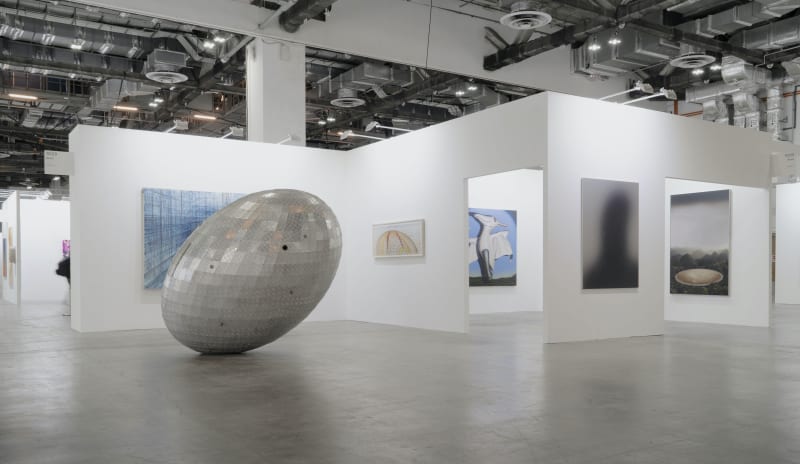The air was thick with anticipation as the much-delayed Art SG fair finally swung open its doors in Singapore on Wednesday. Collectors, curators, and dealers from across the globe streamed into the city’s iconic Marina Bay Sands convention center eager to comb through works from more than 160 local and international galleries.
“This has been four years in the making,” said Mathieu Borysevicz, founder of the Shanghai gallery BANK, which signed up as an exhibitor in 2018 when the fair was first announced. “Initially, we were a little hesitant about Singapore because it’s not the most dynamic city in terms of culture, and we don’t have many collectors here, but all that seems to have shifted.…Yesterday was explosive.”
--
BANK
Booth 1C03
With works by Busui Ajaw, Xu Bing, Ching Ho Cheng, Michael Lin, Lin Ke, Michael Najjar, Tawatchai Puntusawasdi, Tang Song, and Sun Yitian
Chiang Mai–based artist Tawatchai Puntusawasdi’s Haumea (2016) is the cornerstone of this thoughtfully curated exhibition from Shanghai gallery BANK. The monumental egg-shaped sculpture, made of riveted aluminum plates, depicts a rendering of the shadow of the earth on the moon. Made using complex mathematical calculations and diagrams—seen in an adjacent, blueprint-like drawing—the work appears at once ancient and futuristic.
Michael Najjar, ‘f.a.s.t.’, 2017, Photography, Hybrid photography, archival pigment print, diasec, custom-made aluminum frame, BANK
The otherworldly sculpture forms a natural dialogue with the nearby photograph f.a.s.t. (2017) by German photographer Michael Najjar, which pictures the world’s largest radio telescope in China, a spherical metal structure spanning 500 meters that was built to detect extraterrestrial signals. Bordering on the surreal, the work shows the mammoth curved technical instrument nestled in a remote valley, seamlessly combined with a smattering of starlike specks at the top of the work, distant galaxies photographed by the Hubble Space Telescope.



